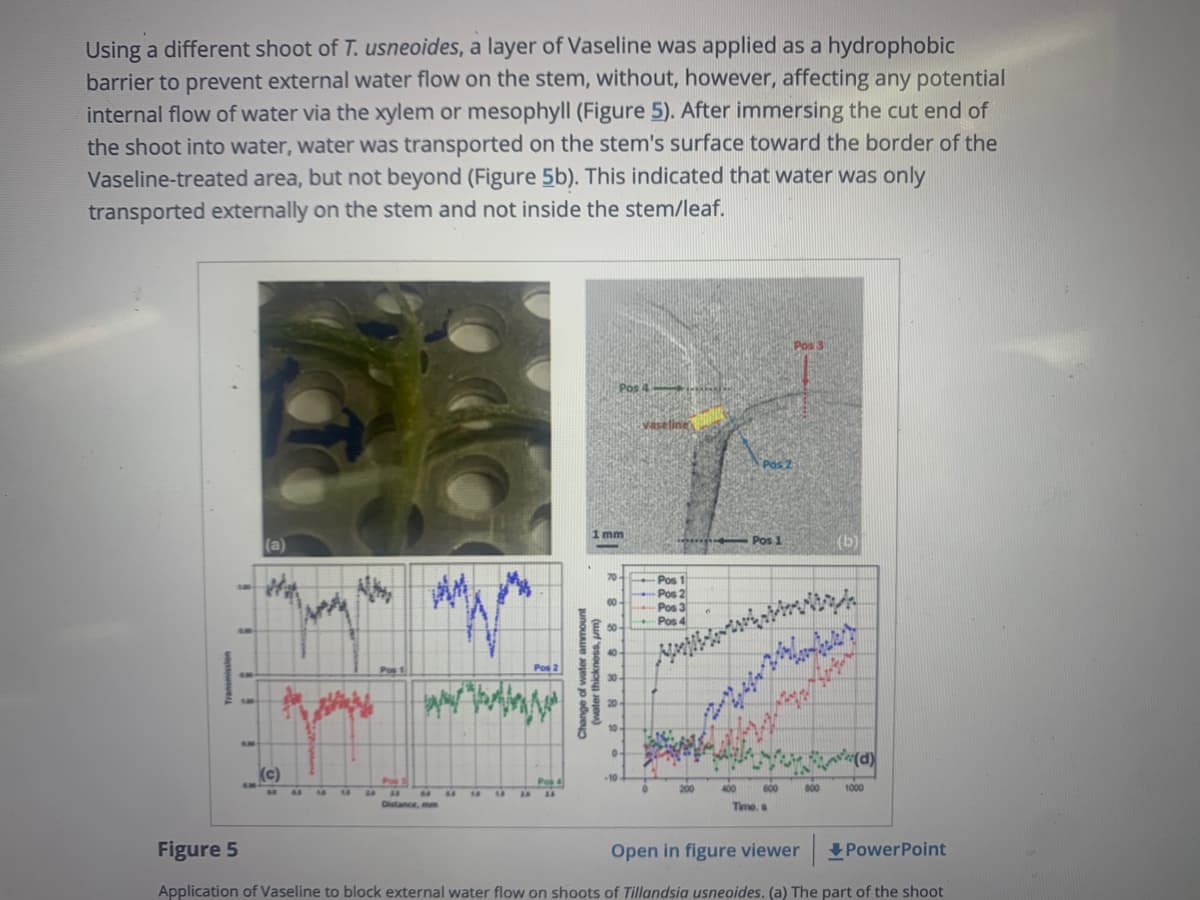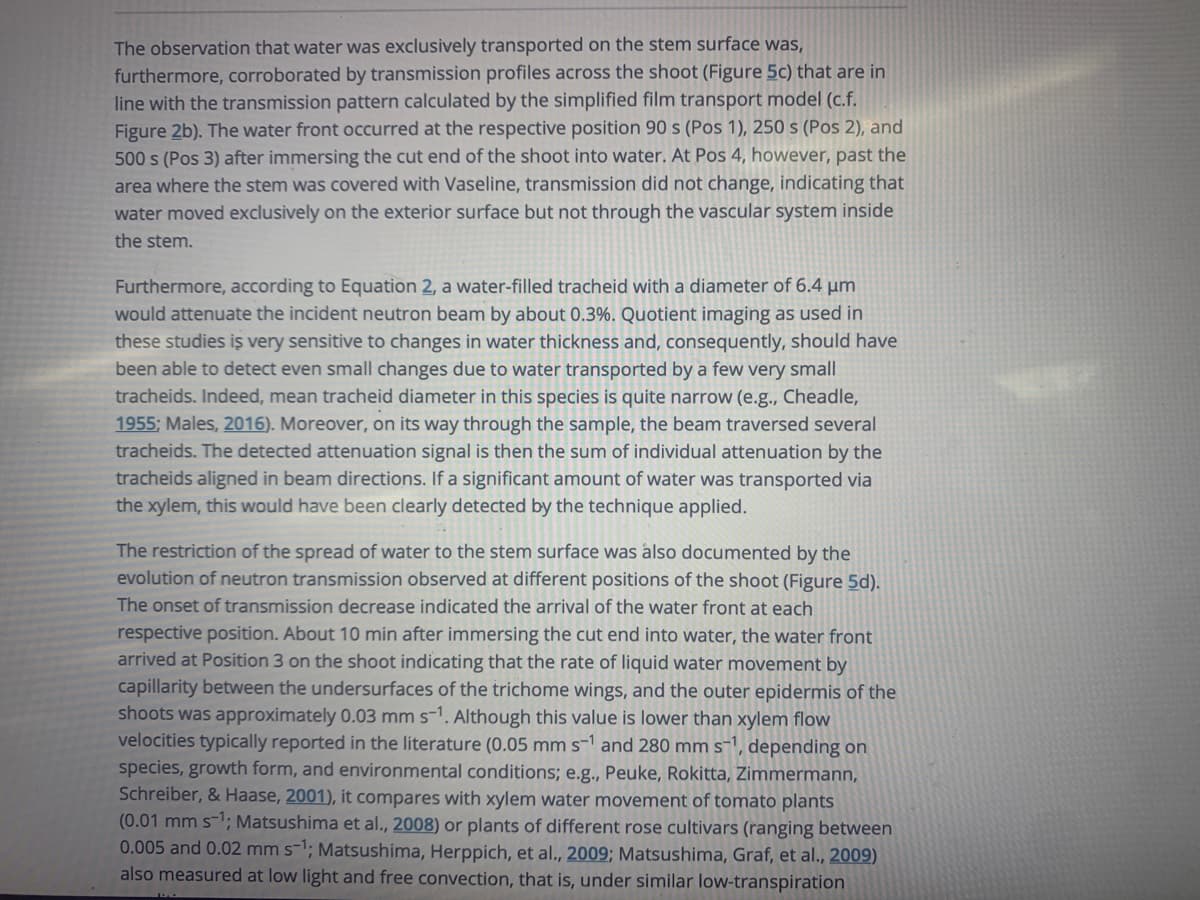Using a different shoot of T. usneoides, a layer of Vaseline was applied as a hydrophobic barrier to prevent external water flow on the stem, without, however, affecting any potential internal flow of water via the xylem or mesophyll (Figure 5). After immersing the cut end of the shoot into water, water was transported on the stem's surface toward the border of the Vaseline-treated area, but not beyond (Figure 5b). This indicated that water was only transported externally on the stem and not inside the stem/leaf. Pos 3 sod yaseline Pos 2 1 mm (a) Pos 1
Plant Structure and Growth
Roots anchor, the plant, ingest minerals and water, direct water and supplements, and store food. These are two kinds of root frameworks.
Plant Life Cycle
Plants are part of the PLANT KINGDOM, which is one of the five kingdoms of life. Plants are divided into smaller classes based on common characteristics. Certain characteristics are shared by all plants. They are made up of a large number of cells. They also make their own food through a chemical process called photosynthesis, which involves the use of water, carbon dioxide, and solar energy. They pump life-giving oxygen into the air as a by-product.
Life Cycle of Plants
All the organisms that belong to the Kingdom Plantae are known as plants. They are multicellular and eukaryotic and can synthesize their food by photosynthesis, known as autotrophic organisms. They are classified based on certain characteristics, such as the plants bear flowers; some have only naked seeds and do not contain flowers. Some plants neither have seeds nor flowers, such as ferns and mosses.
Plant Morphology and Anatomy
The study of life and organisms is biology. The cell is recognized as the basic unit of life by biology. From ancient Greek, biology is recognized. Modern biology deals with the recent developments in Science.


Step by step
Solved in 2 steps


